200 Gallons
Château Brane-Cantenac
Grand Cru Classé en 1855 Margaux Red Bordeaux Blend 2005
I have a six-pack of this 05. I thought after 10 years in bottle, it would be interesting to check in on its evolution. While tasty, I’ll wait another 8-10 to open another. Even after 2-3 hours in the decanter, it’s still a very young adolescent. On the nose, slightly sour blackberries & dark cherries, dark currants, baked black plum, haunting blue fruits, anise, whiff of spice, steeped tea, dry stones, dry crushed rocks with dry top soil, caramel, vanilla with fresh & dry red florals. The body is thick & full. Tannins are starting to round out. It’s velvety on the palate. The fruits are; bright, fresh & ripe and really show the greatness of the 05 vintage. Dark currants, blackberries, dark cherries, baked black plum, haunting blue fruits, baked strawberries, cherries, raspberries on the long set, dark spice, clay & loamy dry top soil with crushed rocks, dry stones, cigar with ash, graphite, dry stems, slight herbaceous character, mint, used leather, clove, caramel, vanilla, fresh & dry red florals with violets. The round acidity is about perfect. The structure and length are still strong. The balance is in harmony. As for the long finish, it’s lush, ruby, rich and well polished. Photos of; Chateau Brane Cantenac, large wood vats, Henri Lurton and Estate vines. Producer notes and history...Chateau Brane Cantenac began in the early 17th century. At the time, the estate was known as Domaine Guilhem Hosten. Even that far back, wine was produced from the property. In fact, the wine was so highly regarded it was one of the more expensive wines in Bordeaux. It sold for almost as much money as Brane Mouton. This is interesting because of who went on to buy the vineyard in the 1800’s. The Baron of Brane, also known as “Napoleon of the Vineyards”, purchased the Chateau in 1833. At the time of the sale, the estate was called Chateau Gorce-Guy. To get the funds needed to purchase the Margaux vineyard, the Baron sold what is now called Mouton Rothschild, which was at the time of the sale, known as Chateau Brane-Mouton. Not such a good move with hundreds of years in hindsight! In 1838, the Baron renamed property taking his name and the name of the sector where the vineyards were located and called it Chateau Brane Cantenac. The Chateau later passed to the Roy family, who were well-known in the Margaux appellation in those days, as they owned Chateau d’issan. Moving ahead to 1920, the Societe des Grands Crus de France, a group of merchants and growers that owned several chateaux located in the Medoc including; Chateau Margaux, Chateau Giscours, and Chateau Lagrange in St. Julien, purchased Chateau Brane Cantenac. Five years later, M. Recapet and his son-in-law, François Lurton, took over Brane Cantenac along with Chateau Margaux. Lucien Lurton (the son of François Lurton) inherited Brane Cantenac in 1956. Today, the estate is still in the hands of the Lurton family. Brane Cantenac is owned and run by Henri Lurton. After being given the responsibility of managing Brane Cantenac, it was under the direction of Henri Lurton that large portions of the vineyard were replanted. Vine densities were increased, the drainage systems were improved and the plantings were also, slowly changed. The vineyard of Brane Cantenac is planted to 55% Cabernet Sauvignon, 40% Merlot, 4.5% Cabernet Franc and .5% Carmenere. Carmenere was used for the first time in the 2011 vintage. The only other Chateau I know that still uses Carmenere is Clerc Milon. The 75 hectare Left Bank vineyard of Brane Cantenac is essentially unchanged since it earned Second Growth status in the 1855 Classification. At least that is the case with the 45 hectares used to produce the Grand Vin of Brane Cantenac. Those 45 hectares are planted surrounding the Chateau. Those vines are located just in front of the Cantenac plateau and are the best terroir that Brane Cantenac owns. They have other parcels, which are further inland and much of those grapes are placed into their second wine, Le Baron de Brane. Those additional hectares can be divided into 3 main sections. Behind the Chateau, they have 15 hectares of vines on gravel and sand, 10 hectares across the road with sand, gravel and iron and a 13 hectare parcel with gravel called Notton, which is used for their second wine. The vineyard is planted to a vine density that ranges from 6,666 vines per hectare on the plateau and up to 8,000 vines per hectare for the vines located behind chateau, in their sandier soils. The higher levels of vine density are always found in the newer plantings. The terroir of Brane Cantenac consists of deep gravel, sand and clay soil. Experiments in the vineyards are currently looking at becoming more organic in their vineyard management. Today, more than 25% of Brane Cantenac is farmed using organic farming techniques. It is expected that over time, the amount of hectares farmed with organic methods will be increased. Brane Cantenac has gone through 2 relatively recent modernization’s in 1999, when they added began adding the first of their smaller vats to allow for parcel by parcel vinification and then again in 2015 when they completed a much more complete renovation of their cellars and vat rooms. While Brane Cantenac is a traditional producer, they are no stranger to technology as they were one of the first estates to embrace optical grape sorting machines. In very wet vintages, they can also use reverse osmosis. To produce the wine of Chateau Brane Cantenac, the wine is vinified in a combination of temperature controlled, traditional, 22 oak vats, 18 concrete tanks and 20 stainless steel vats that vary in size from 40 hectoliters all the way up to 200 hectoliters, which allows for parcel by parcel vinification. 40% of the fermentation takes place in the oak vats. The oldest vines are vinified in vats that are selected to allow for separate parcel by parcel vinification. The younger vines are vinified more often together in the same vats. However, the Carmenere is entirely micro-vinified, meaning that those grapes were completely vinified in barrel, using micro-vinification techniques. This can also happen because the amount of grapes produced is so small. Some vats can be co-inoculated, meaning they go through alcoholic fermentation and malolactic fermentation simultaneously. At Chateau Brane Cantenac, malolactic fermentation takes place in a combination of French oak tanks and barrels. The wine of Brane Cantenac is aged in an average of 60% new, French oak barrels for 18 months before bottling. The initial 2 months of aging is done with the wine on its lees, which adds more depth to the wine. There second wine is Le Baron de Brane. Le Baron de Brane is not new. In fact, previously, the second wine went under the name of Chateau Notton, which took its name from one of the main parcels where the grapes were planted. During the late 1950’s and into the 1960’s, having a second wine was important as the estate declassified 3 vintages, due to extremely poor, weather conditions in 1956, 1960 and 1963. Production of Chateau Brane Cantenac is about 11,000 cases per year. — 8 years ago
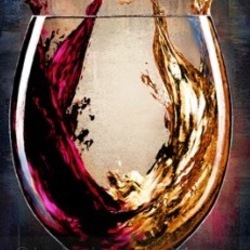
Hammeken Cellars
Aventino 200 Ribera del Duero Tempranillo
Really nice balance, great length, soft, delicate tannins. — 10 years ago
Bodegas y Viñedos Vega Sicilia
Valbuena 5° Ribera del Duero Tempranillo Blend 2007
Great nose, beautiful wine $200 — 10 years ago
Tenuta San Guido
Bolgheri Sassicaia Cabernet Sauvignon Cabernet Franc 2009
Restaurant I London - 200 £ — 11 years ago
Aventino
200 Ribera del Duero Tempranillo 2010
Very nice. Ribera del Duero keeps delivering. It's fruity, berry and rich. Yet not too heavy tanins. There's some complexity. — 11 years ago
Do Ferreiro
Rías Baixas Albariño 2011
200+ year old vines, people. — 13 years ago
Seavey Vineyard
Estate Grown Cabernet Sauvignon 2013
The nose reveals; dark currants, blackberries, heavy black plum, black raspberries, dark cherries and some blueberries. Black tea, expresso roast, anise, crushed dry rocks, big vanilla, clove, a little nutmeg, dry underbrush, sweet tarry notes, leather, woody notes with dark fresh & withering flower bouquet.
The body is big and lush. The tannins are big, meaty and tarry. Very dark currants. Blackberries, heavy black plum, black raspberries, dark cherries and some blueberries & strawberries as they open up. Black tea, expresso roast, steeped fruit tea, anise, crushed dry rocks, dry clay, big graphite, big vanilla, dark spice, clove, light dry herbs, a little nutmeg, dry underbrush, sweet tarry notes, leather, cedar with violets dark fresh & withering flower bouquet. The acidity is round, fresh and beautiful. The big, long, well balanced finish is excellent and look forward to having this in 15-20 years. This one will be a stunner!
Photos of, the barn where they make wine and hosts tastings, our private tasting area inside William’s old office. William desk and their outside terrace area.
Producer history & notes...Seavey Vineyard is located along Conn Valley Road in the eastern hills of Napa Valley, about 15 minutes from the valley floor.
This historical property was originally a cattle ranch. However, records indicate grapes were planted on some of the hillsides as early as the 1870’s. The stone dairy barn, still in existence, was built in 1881.
William & Mary Seavey purchased this property in 1979. The estate was originally founded by the Franco-Swiss Farming Company in 1881 which, closed down when Phylloxera destroyed their grape vines and the Volstead Act (Prohibition) went into effect. At the time of their purchase, they were a horse and cattle ranch. They quickly planted the slopes with grapes and initially sold their fruit to Raymond Vineyards. They have never purchased grapes, all their wine is made from estate grapes. Their vineyards are separated into 20 plus individual blocks.
Today, the property is about 200 total acres of which, 40 acres are planted to vine. Their hillside vineyards produce low yields of rich concentrated fruit. A small block of Chardonnay grows in a cooler lower part of their property. Besides grapes, they also raise cattle which are used to graze the hillsides. They feed the vineyard with the cattle cuttings. In 2003, they were one of the first Napa wineries to install solar.
Mary passed away in 2008 and William died in 2016. There daughter Dorie returned to the family business and now oversees the winery operations. Her brother Arthur also handles national and some small international sales, primarily to restaurants. However, most of their wine is sold direct to consumers.
Seavey’s first commercial vintage was released in 1990 a year after they renovated the stone dairy barn into a working winery. Today this stone building is the centerpiece of the property and is where tastings are hosted.
Since 2011, Jim Duane has been their day to day Winemaker. He’s worked at Robert Mondavi and Stag’s Leap Wine Cellars. It should also be noted that Philippe Melka Winemaker/Consultant has been with Seavey since 1995...one of Philippe’s two initial wine making jobs in the Napa Valley were with Seavey and Lail Vineyards.
Seavy makes about 3,200 cases annually depending on what mother nature brings. They make around two hundred cases of Chardonnay, slightly more Merlot and the rest is of the production is comprised of their Caravina and Estate Cabernets.
— 7 years ago


Joseph Phelps Vineyards
Insignia Estate Grown Napa Valley Cabernet Sauvignon Blend 2012
Not worth $200 — 8 years ago
Reynolds Family Winery
Estate 200 Series Napa Valley Cabernet Sauvignon 2014
Awesome nose - tobacco, mint, anise(?). True red in color. Warm, sweet red pepper spice on the palate with a full velvet body. Remote red fruit to balance. Elegant and fun. — 9 years ago
Bodegas Vinicola Real
200 Monges Gran Reserva Rioja Tempranillo
Vinazo. Great ancient wine from Rioja. — 9 years ago
Domaine Roulot
Meursault Chardonnay 2013
2013 ~$200 @ Zuni — 9 years ago
MontGras
200 Bicentennial Reserva Cabernet Sauvignon Carménère 2009
A lot better than I expected - Dark raspberry, blackberry, cocoa, some tobacco, date/fig, plum. Dark fruit all around. Tannins still have a good hold. Nice long finish. Solid for a 5center. — 10 years ago
Dominus Estate
Dominus Napa Valley Cabernet Sauvignon Blend 2012
Tasted. No doctors made me pay through the nose like Mr. @Bill Bender but I feel his pain. My impatience won't allow me to buy this "en quant." Drink now or forever hold your peace! $200/btl means I hold my wallet... — 10 years ago
Bodegas Vinicola Real
200 Monges Reserva Selección Especial Rioja Tempranillo 2004
Decanted for two hours and then left in bottle for about 8 more hours and it still kept developing in the glass. Earthiness came through but wasn't harmonious at first but as the night progressed it became nicer and nicer. Maybe it should be opened up the night before to really see it at its true form. — 11 years ago
A Coroa
200 Cestos Valdeorras Godello
200 baskets picked; fragrant pear, lovely texture. — 12 years ago
Tenuta dell'Ornellaia
Bolgheri Red Bordeaux Blend 1999
Bought this in 2002. Finally popped it open to celebrate the move to Charleston. Great wine, but not as complex as I would have thought, especially for over $200 a bottle. Cheers! — 7 years ago
Roederer Estate
Brut Anderson Valley Sparkling Pinot Noir - Chardonnay Blend
Founded in 1982, Roederer Estate adds oak-aged reserve wines to all their blends to create complex, dry and harmonious sparkling wines. The first Brut California sparkling wine produced by Champagne Louis Roederer, builds upon a 200-year tradition of winemaking. Straw, nice mousse and bubbles for this 60% Chardonnay & 40% Pinot Noir blend. Crisp Apples and creamy mineral tones, nice balance with acidity. Lingering finish ending with oak, lemon and nutty characteristics. Very nice! — 8 years ago
Cameron Hughes
Lot 200 Napa Valley Cabernet Sauvignon 2008
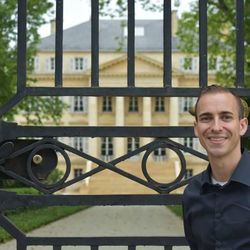
Continuum
Napa Valley Cabernet Sauvignon Blend 2014
One the nose, lean, ripe, ruby, fruits of blackberries, dark cherries, raspberries and plum. Loamy soils, vanilla and fragrant perfumed florals. The body is medium with dry, silty, soft tannins. The fruits are lean & ripe, and creamy; blackberries, dark cherries, raspberries and plums. Dark, dry, loamy soils, dry stems, soft leather, wood shavings, touch of vanilla, raspberry cola, steeped fruit tea, dark chocolate bar, violets, red florals, good acidity and a lean dry finish. It's a decent wine that will improve but I'm not at all seeing the $200 plus a bottle price point. Photo tour of the estate, Continuuim vineyard, tasting room and owner Tim Mondavi and his daughter Carissa. — 8 years ago

Gargiulo Vineyards
Five Seventy Five OVX Cabernet Sauvignon 2013
It's a baby / this will age for 30 years - notes are simple big bold and 100% cab - love it and first year with this wine - man is this good - a limited release Cabernet Sauvignon of 200 cases - pure elegance and balance and yet a powerful wine- nose reveals delicate aromas of dark red fruits and berries - first to last sip in your glass is a revealing experience that talks loud and clear and says remember me - and I will - love it and smiling bright and big tonight — 9 years ago
Viña González Bastias
Matorral Pais 2010
200 year old vines! Wtf... A lot of rubarb, a chalky clay note. Stunning 14%. Hand pressed(literally) — 10 years ago
Tulip Winery
Black Tulip Alma Vineyard, Moshav Mata Cabernet Sauvignon Blend 2010
91/100
Magnum - Bottle 63 from 200
Vintage 2010 — 10 years ago
Swanson Vineyards
Face Napa Valley Cabernet Sauvignon 2010
2010 Swanson FACE Cabernet Sauvignon .... 200 cases produced. Love Napa Valley! — 11 years ago
Waterstone
Napa Valley Cabernet Sauvignon Rosé 2013
One of my favorite Rosés of all time! Rosé of Cabernet, with hibiscus, and roses. Strawberry & watermelon. Dry. So much fun! Saignée method of production, less than 200 cases per year. The QPR is outstanding, IMO. $18 retail. — 12 years ago
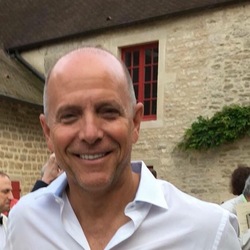



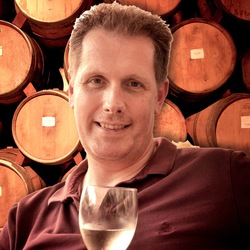

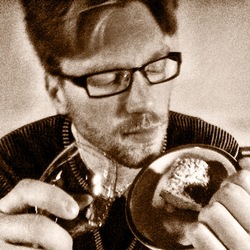
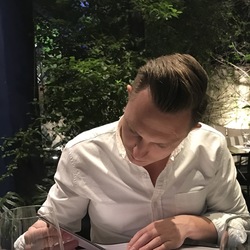



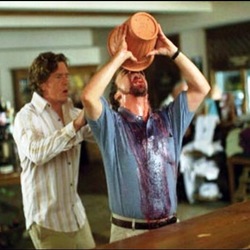
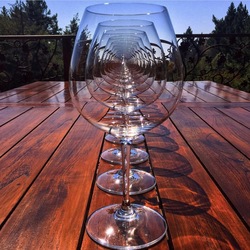
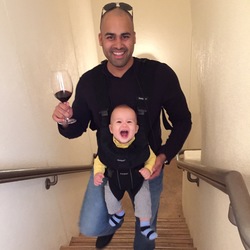

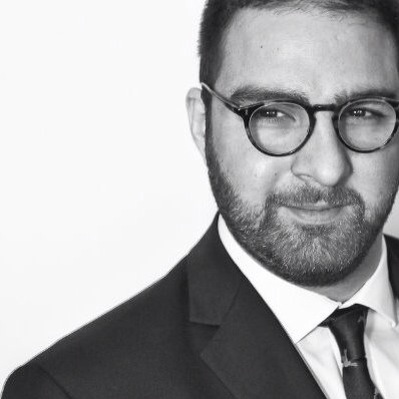

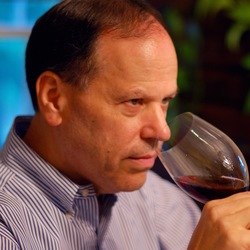
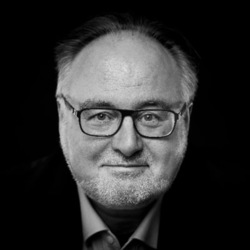




Rodney Rosser
Wow 2013 drinking fantastic, 200 year old vines! I can taste the ocean breezes - minerals screaming for seafood! — 7 years ago